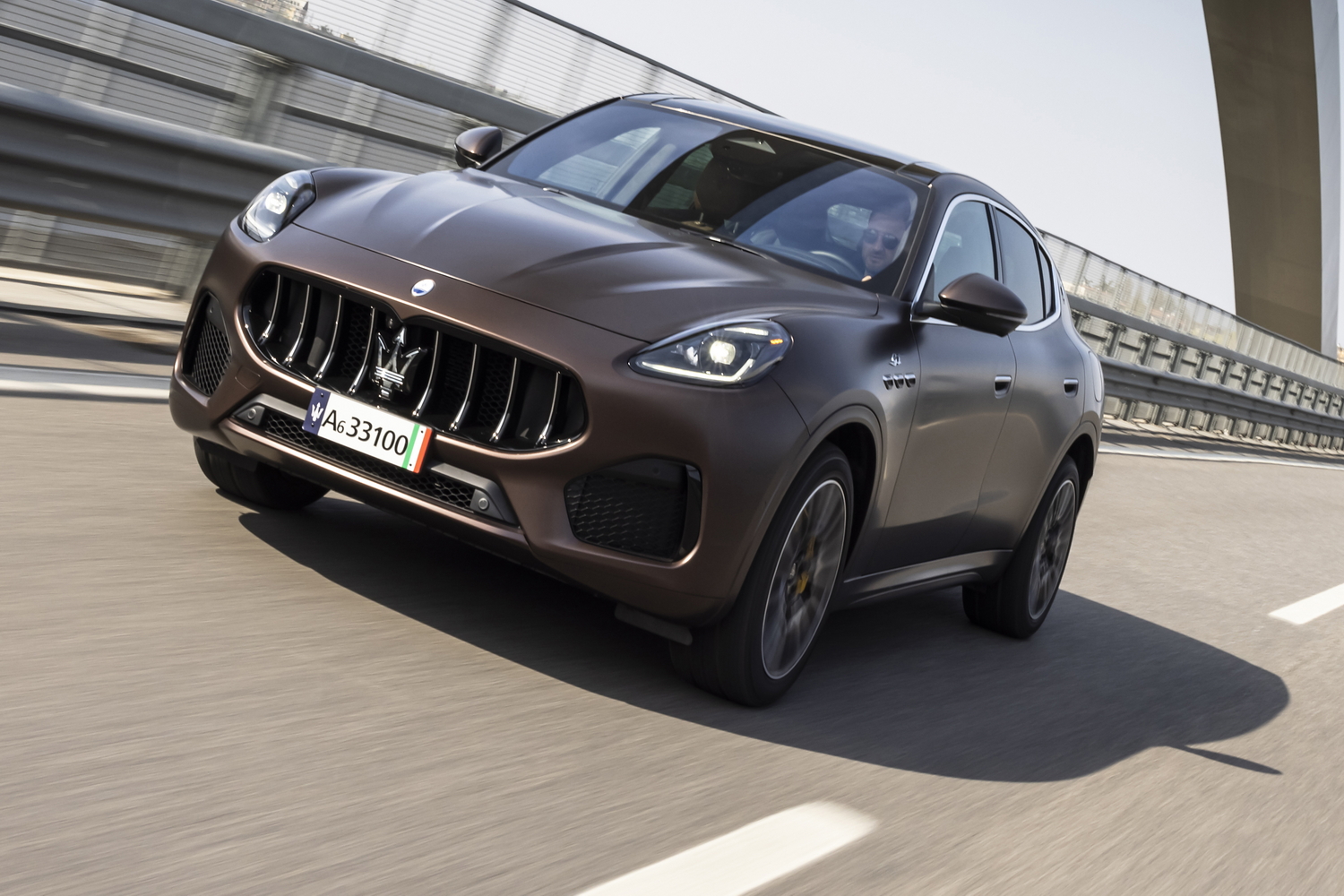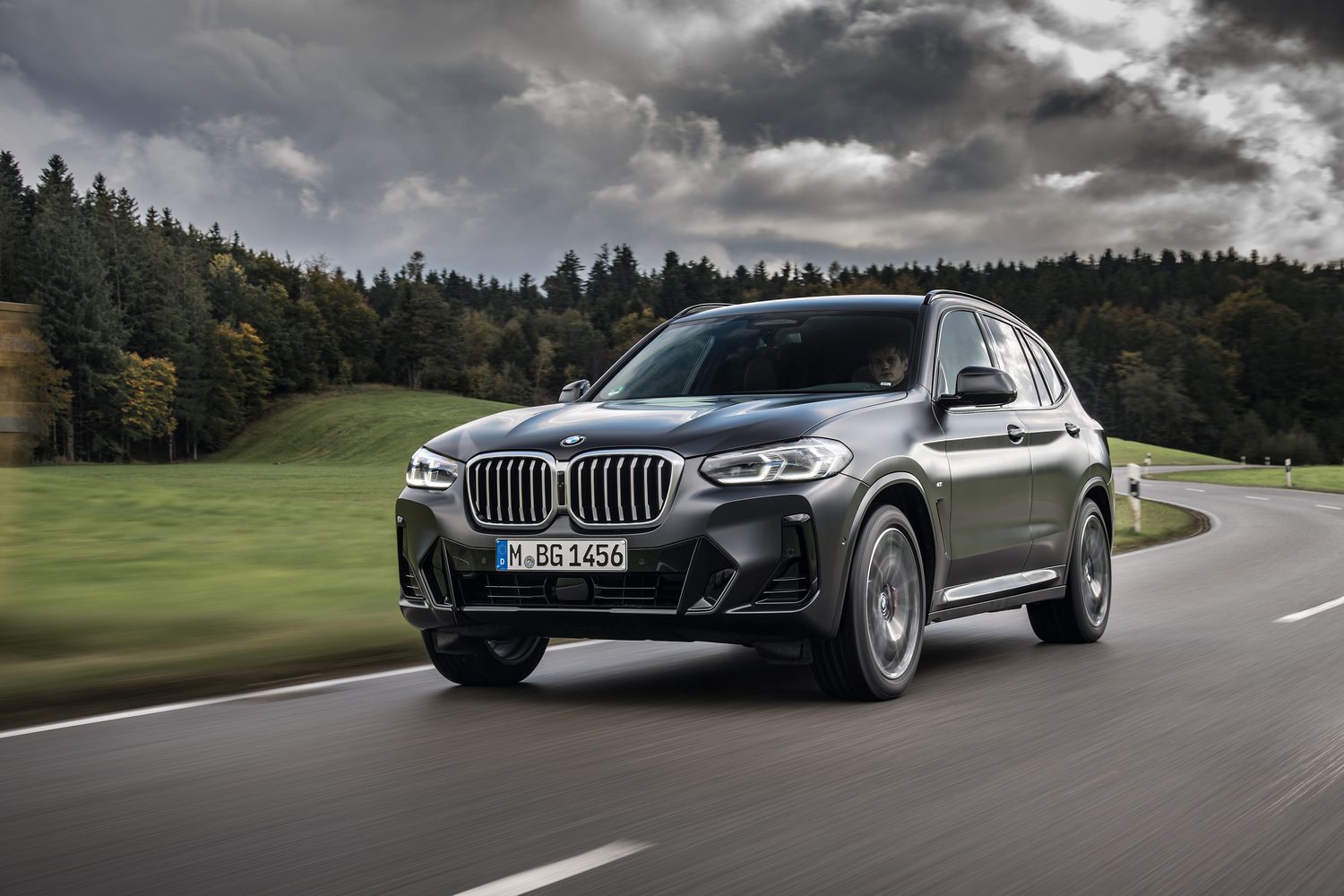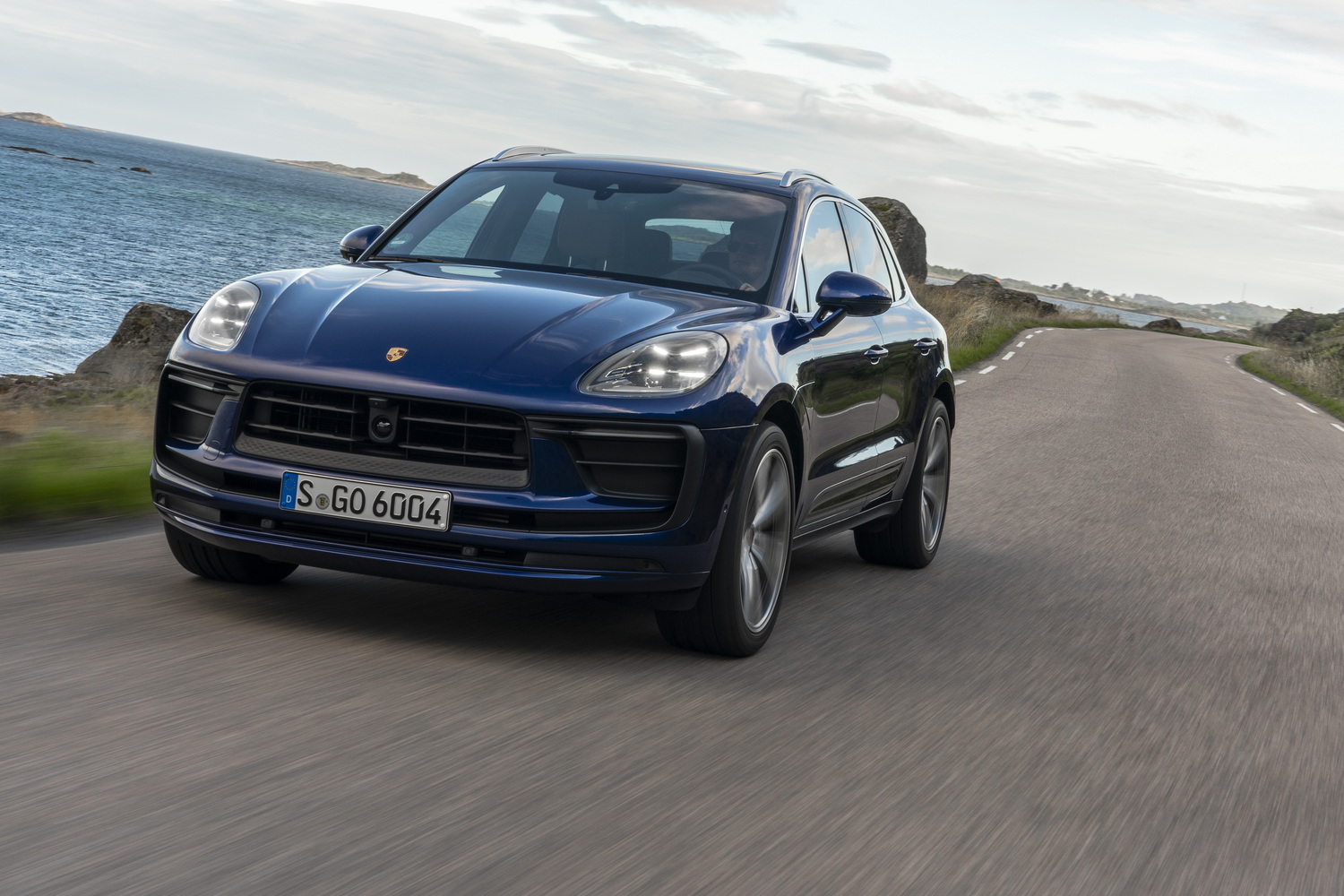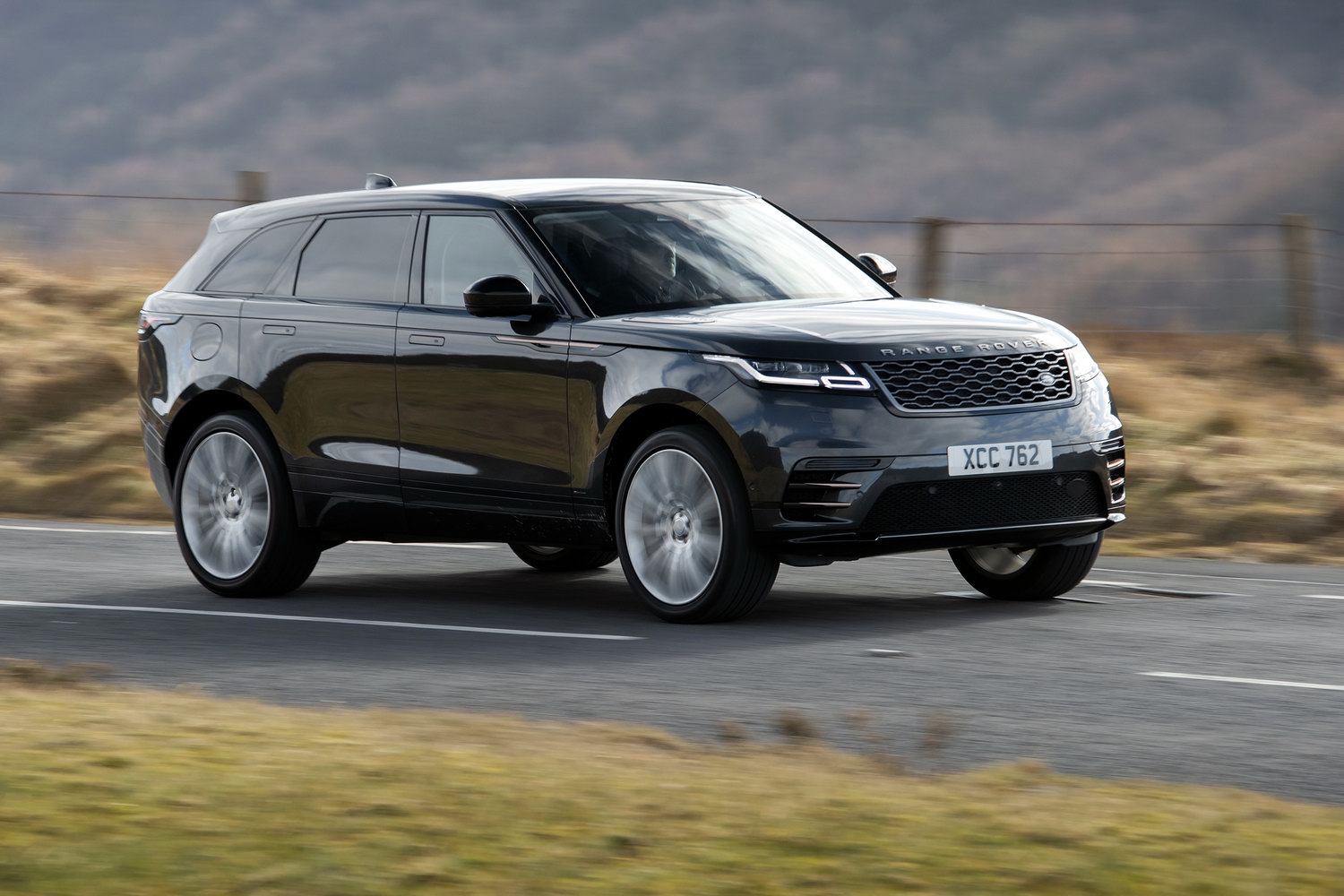By its own admission, Maserati is late to the mid-size SUV game. The Range Rover Sport-rivalling Levante has had some success, and now it's finally time for the smaller Grecale to break cover and launch an assault on the likes of the Porsche Macan, BMW X3 and Range Rover Velar. It's a long-overdue addition to the Maserati line-up, but against such accomplished opponents, can the Grecale really compete?
In the metal
Pigeon-holing the Grecale should be fairly simple - it's a medium-sized premium SUV with a bit of sporty intent - so it ought to be up against the BMW X3, Alfa Romeo Stelvio and Porsche Macan. However, Maserati is adamant that it isn't really playing the same game as established models, proudly stating it has "done things differently" with its new contender. Quite what it has done differently is not immediately apparent, but the designers claim the slanted rear windscreen means this is a rival for the BMW X4, Mercedes-Benz GLC Coupe and Range Rover Velar.
Whether you believe that or not (we cynics think it might be a ruse to prevent comparisons with the Stelvio), the Grecale is unquestionably swimming in the mid-range premium SUV pond. The fish in that particular body of water have sharp teeth, with the Macan and X3 both making a name for themselves as outstanding driver's cars, while the Velar and Stelvio mix capability and style.
In its bid to compete with such popular and competent rivals, the Grecale is off to a mixed start. The bodywork seems to divide opinion, with some appreciating the way in which Maserati has transferred its design trademarks onto the SUV shape, while others seem to see shades of other models in the design. To us, it's quite generic with shades of Ford Puma in the front end and a smattering of Jaguar F-Pace at the rear, but it isn't ugly by any stretch of the imagination. If you disagree, wait until you see one in the flesh; pictures don't seem to do it justice.
Inside, the design gets even better, with an all-new dashboard centred around a digital clock face. It's the first time Maserati has swapped its traditional analogue clock for a circular digital screen, but that attitude sets the tone for the rest of the car. Technology plays a starring role, with not one but two central touchscreens and a digital instrument display behind the steering wheel. And as if that wasn't enough, it's all supplemented by a head-up display that's projected onto the windscreen.
The new displays are crucial to the Grecale's cabin because Maserati has more or less removed buttons from the dashboard. Pretty much every function can now be found somewhere on those two touchscreens, so it's a good job they're decent. Admittedly, they don't quite live up to BMW or Volvo systems, but they're much sharper (both in terms of definition and responsiveness) than anything Maserati has produced before. The top screen is occasionally slow to respond, but it's usually crisp and easy to use, while the bottom screen is a little fussier. Finding your way around efficiently takes a little familiarisation.
The digital instrument display is also clear and configurable, as is the norm. It can't match Audi's Virtual Cockpit, but it feels more modern than the hybrid displays in the Porsche Macan. The clock, however, feels like a gimmick, thanks to its ability to display information other than the time. If you want, you can set it to show G-forces or a compass, although we can't really think why. Much more successful, though, is the clear, concise head-up display, which makes its debut on a Maserati vehicle and does a really excellent job.
Inserting all this technology means the Grecale has fewer buttons on the dashboard, but there are still plenty on the steering wheel. Unfortunately, the shiny black plastic switches feel cheap and flimsy, and the silver-coloured rotary dial for the driving modes is little better. Even the gear shift paddles behind the wheel feel a bit cheaper than you might like, and they get in the way of your fingers as they stretch for the indicator stalks behind, making the car a bit of an ergonomic nightmare.
Fortunately, that's the only real complaint about a cabin that's far more stylish and better built than most Maserati interiors. Most of the materials feel premium and soft to the touch, with only the fake chrome on the steering wheel and air vents giving off cheap vibes. Even traditional Italian weak points, such as the mechanism for the cubby hole cover in the centre console, feel almost Germanic in their construction and operation.
Even better, the Grecale can match most of its rivals for space. Rear legroom is particularly good - partly because the Grecale is longer than the Stelvio on which it's based - and headroom will be sufficient for all but the tallest passengers. In the boot, meanwhile, the 535-litre luggage space is par for the course in this segment, although those in need of more space could always choose the Trofeo model, which has a 575-litre boot volume.
And speaking of volume, special mention should go to the Sonus Faber sound system. Our test car came with the 21-speaker system, rather than the 14-speaker set-up that comes as standard, and it produced impressive sound quality.
Driving it
Under the skin, the Grecale borrows its basic architecture from the Alfa Romeo Stelvio, and that's a good place to start. That might not be the best built SUV or the most comfortable, but it's good fun to drive - particularly in go-faster Quadrifoglio form.
Unfortunately, our test drive of the Grecale took place in the early days of an Italian spring, when winter tyres are mandatory, even if they do nothing to showcase a car's handling prowess. It leaves a bit of a caveat against these driving impressions, and we'll wait until we get the Grecale on summer tyres and more representative roads before passing final judgement.
Nevertheless, initial impressions aren't too shabby. The engine is particularly impressive, even though it's supposed to be the entry-level option. The 2.0-litre unit produces a total of 300hp, which is sent to all four wheels via an eight-speed automatic gearbox, resulting in a very respectable 0-100km/h time of 5.6 seconds and a top speed of 240km/h. In comparison, a 2.0-litre Porsche Macan will only do 0-100km/h in 6.4 seconds and it runs out of puff at 232km/h.
The Grecale is also more fuel-efficient, thanks in part to its mild-hybrid technology that allows the stop-start system to cut in earlier and lets the car harvest some of the energy that would normally be lost while braking or coasting. That can then be redeployed to help the engine out when it's under load, improving efficiency. In simple terms, that means the Grecale GT will burn between 8.7- and 9.2 litres of unleaded every 100km, which compares favourably with the Macan.
But straight-line speed and efficiency aside, the Grecale does not appear to match the Macan in any other way. Yes, the 2.0-litre car feels agile, while the rear-biased four-wheel-drive system gives it balance, but the steering feels a little vague around the straight-ahead, and although the response from the front wheels isn't bad, the set-up lacks the precision and fluidity of the Porsche's. Admittedly, the winter tyres probably didn't help in this regard, but they should have had no significant impact on the Maserati's suspension, which doesn't offer the same body control as that of the Macan. But while the Grecale's body does lean in corners, that is well controlled, and the car certainly doesn't lurch around like some luxury SUVs - it just isn't as stable as its German arch rival.
In exchange for that extra lean, however, the Grecale provides decent levels of comfort. Our test car did come with the optional air suspension (steel springs are standard on the GT), and it offers more than acceptable comfort at motorway speeds. Concentrate and you'll spot a gravelly quality to the ride that makes it feel unsettled even on relatively smooth surfaces, but again the tyres may be partly to blame. The low-speed ride is more brittle and probably less tyre-dependent, but there's a 'comfort' mode that takes the edge off all but the most savage potholes.
Where the Grecale really does impress is in terms of refinement. There's little in the way of wind or road noise, and even the four-cylinder engine - usually a red flag in a premium car - sounds passable. Maserati says it's tuned to sound like a V8, which is a preposterous claim, but it doesn't sound anything like as dreary and droning as most in-line four-cylinder engines, even if you're pushing it a bit.
What you get for your money
With no Maserati dealers in the Republic of Ireland, Irish customers are more or less forced to import their car from the UK - Charles Hurst has a Maserati outlet in Belfast. Maserati hasn't confirmed prices and full specifications just yet, but the Grecale is expected to cost noticeably more than the Alfa Romeo Stelvio. Then consider import and registration costs and you've got quite an expensive SUV.
Summary
First impressions suggest the Grecale is a solid addition to the mid-size premium SUV arena. Maybe it doesn't have the solidity or the handling of the Macan or the BMW X3, but it's quite practical and the engines are outstanding. The all-round package isn't good enough to mix it with the best cars in this class, but if you've ruled out the usual suspects for any reason at all, the Grecale is a left-field choice that might just work for you.



























